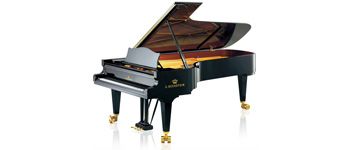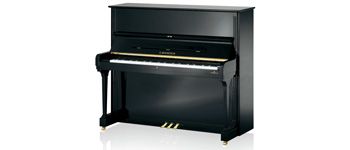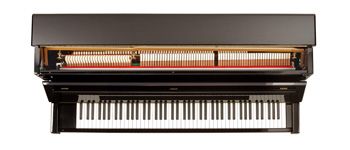Pedals
The pedals change the piano’s sound. Using them properly is an art that enables you to give a personal touch to every composition. Discover the functions of the various pedals.
Right pedal
The right pedal, sometimes called the damper or sustaining pedal, raises all the dampers off the strings, so that they continue vibrating after the key has been released. Furthermore, the vibrations of the strings in question cause other strings to vibrate, so that further overtones complement the original tone. The damper pedal thus generates a rich tonal quality.
Left pedal
The left pedal of a grand piano shifts the entire action to the right, so that the hammer strikes only two strings or even only one in the case of the bass strings, which changes the color of the sound and makes it somewhat softer. On an upright piano, the left pedal moves the hammers closer to the strings, which likewise reduces the sound volume.
Middle pedal
The middle pedal of a grand piano is a “tone-sustaining” device, and is also called the sostenuto pedal. When it is depressed, the last note played continues to sound while all the other notes are damped. The sostenuto pedal is even available as an option on the C. Bechstein Concert 8 upright, as it is required for interpreting certain demanding compositions.




















